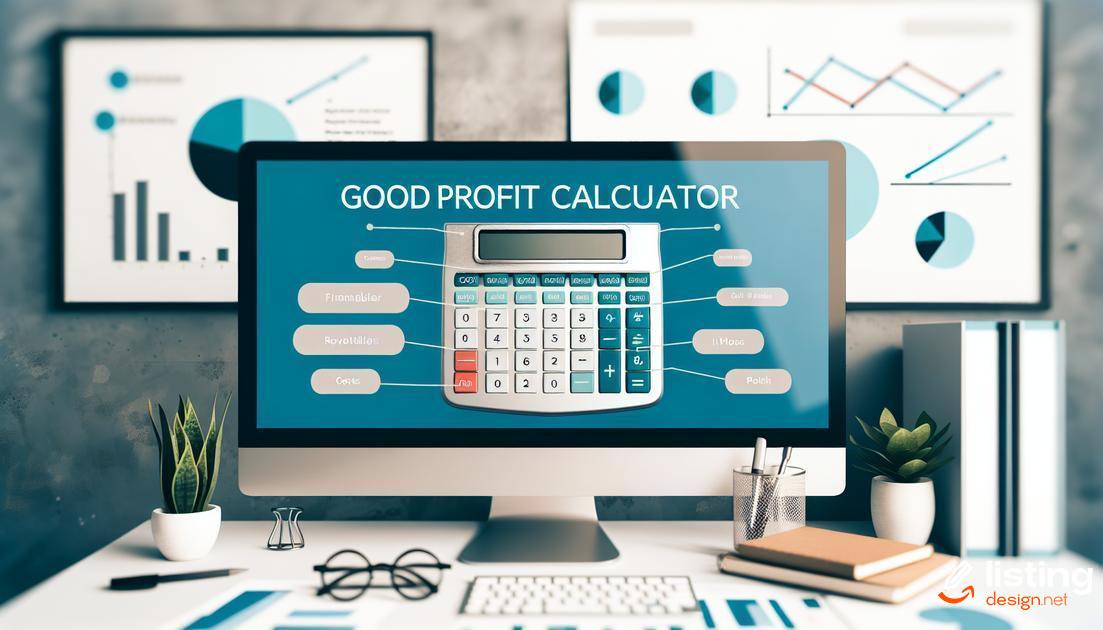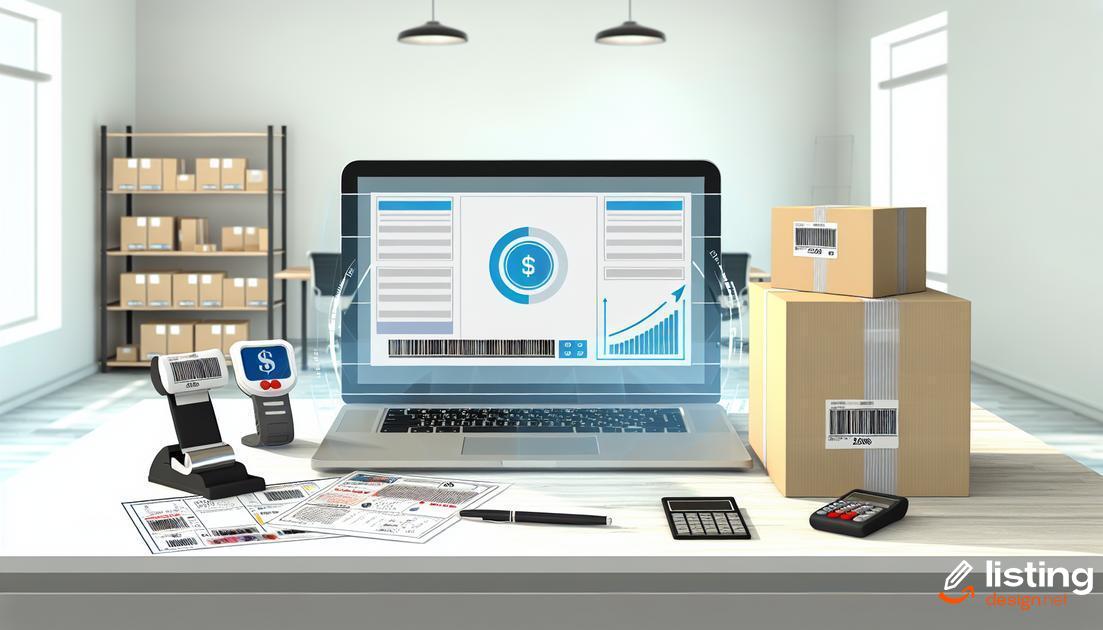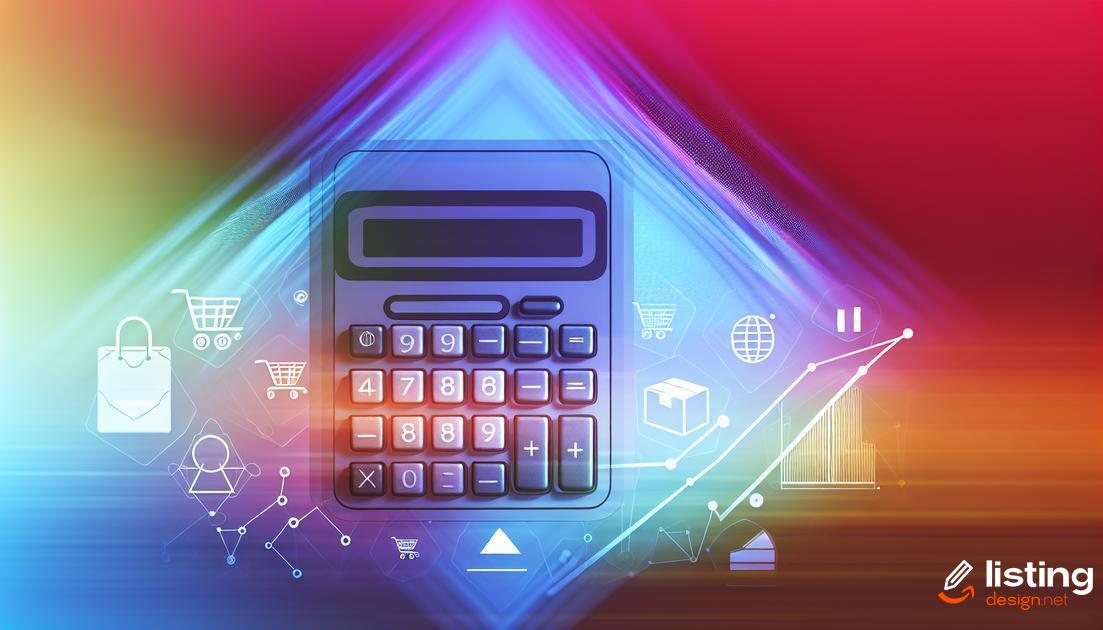Are you struggling to understand your profit margins with Amazon FBA? Using an Amazon FBA Profit Calculator can make things a lot simpler. In this blog post, we will explore the key features and benefits of using this tool. Stay tuned as we dive into tips and common mistakes to avoid, ensuring you get the most out of your Amazon FBA endeavors.
Table of Contents
What is an Amazon FBA Profit Calculator?
An Amazon FBA Profit Calculator is an essential tool for sellers on Amazon’s Fulfillment by Amazon (FBA) program. It helps sellers estimate their potential profit by taking into account various costs and fees associated with selling through FBA. This includes Amazon’s selling fees, shipping costs, storage fees, and other necessary expenses.
One of the key purposes of the profit calculator is to provide a clear picture of your profitability before listing a product or making bulk purchases. By inputting product cost, shipping fee, selling price, and other relevant data, sellers can see an estimated margin and decide if a product is worth selling.
Using the calculator can prevent loss-making sales and ensure that you are setting realistic prices that cover all your expenses while still providing a profit. It’s a practical way to strategize and make informed decisions about inventory and pricing.
An efficient Amazon FBA Profit Calculator should be user-friendly, allowing for quick adjustments and providing a clear breakdown of each component involved in the cost structure. This helps sellers stay competitive and maximize their earnings efficiently.
Key Features of a Good Profit Calculator

Accuracy and Precision
An effective profit calculator should provide precise and accurate results. This ensures that sellers can trust the data to make informed decisions.
User-Friendly Interface
A good tool must be easy to navigate. A user-friendly interface helps sellers to quickly input their data and get the needed results without hassle.
Comprehensive Fee Breakdown
It should offer a detailed breakdown of all Amazon FBA fees. Knowing these fees helps in understanding true profitability.
Real-Time Updates
A reliable profit calculator must offer real-time updates. This allows users to stay informed about current pricing trends and fees, ensuring the data is always relevant.
Integration with Other Tools
Integration capabilities with other e-commerce tools enhance functionality. This can help streamline operations and maximize efficiency.
Customizable Options
The tool should provide customization options, allowing users to tailor the calculations based on their specific needs and preferences.
How to Use the Amazon FBA Profit Calculator
To start using the Amazon FBA Profit Calculator, first, locate a reliable calculator online. Next, gather the necessary data about your product: its dimensions, weight, cost of goods sold (COGS), and the price at which you plan to sell it on Amazon.
Enter your product’s dimensions and weight into the calculator. This helps in estimating the FBA fees, which include fulfillment and storage costs. FBA fees can vary based on the product size and weight, so accuracy is crucial.
Next, input the cost of goods sold. This includes all expenses incurred in producing or purchasing your product. Accurate COGS helps in calculating your actual profit margins more precisely.
Finally, input the selling price of your product. The calculator will use this information along with the costs and fees to gauge your potential profit.
Once all data is entered, the calculator will provide you with an estimated profit margin, considering all Amazon FBA fees. This process helps sellers make informed decisions about their product pricing and potential profitability.
Benefits of Using the Amazon FBA Profit Calculator

Using the Amazon FBA Profit Calculator offers several key benefits for sellers aiming to maximize their earnings. First, it provides precise cost estimation, allowing you to foresee all expenses related to fulfillment by Amazon. This includes shipping fees, storage charges, and referral fees, ensuring no hidden costs surprise you.
Another significant benefit is its ability to help sellers optimize pricing strategies. By inputting different prices, you can instantly see the impact on profit margins and set competitive rates that attract buyers while maintaining profitability. Additionally, the calculator aids in inventory management. Knowing the exact costs involved helps in planning stock levels and avoiding overstocking or stockouts.
Lastly, the tool supports informed decision-making regarding FBA versus FBM (Fulfillment by Merchant). By comparing both models in the calculator, sellers can determine the most cost-effective fulfillment method for their products, ultimately leading to better business outcomes.
Common Mistakes to Avoid
One of the main mistakes is not accounting for all expenses. Sellers often overlook hidden fees, such as storage costs or long-term storage fees. Failing to include these can lead to inaccurate profit calculations.
Another common error is relying solely on default settings. Every business is unique, and so are its costs and margins. Tailoring the calculator to your specific needs can provide more accurate results.
Avoid inputting incorrect product information. Accurate data on cost of goods, shipping fees, and selling price is crucial. Incorrect data leads to wrong calculations and poor business decisions.
Some sellers forget to update their figures regularly. Market conditions change, and so do fees. Regular updates ensure your profit estimates remain reliable and relevant.
Ignoring the competition is another mistake. Knowing what your competitors charge can help you price your products competitively while still ensuring a profit. Use the calculator to frequently analyze and adjust your prices.
Lastly, overlooking the importance of sales tax can result in unexpected expenses. Make sure to include applicable sales taxes in your calculations to avoid end-of-year surprises.
Tips to Maximize Profit with FBA

Optimize Your Product Listings
Ensure your product listings are optimized for search. Use high-quality images, include relevant keywords in your title and descriptions, and provide detailed, accurate product information. This increases visibility and enhances the customer’s experience.
Monitor Inventory Levels
Keeping track of your inventory levels is crucial. Overstocking can lead to high storage fees, while understocking can result in missed sales opportunities. Use the Inventory Performance Index (IPI) to maintain a healthy balance.
Leverage Amazon Advertising
Utilize Amazon’s pay-per-click (PPC) advertising to enhance the visibility of your products. Create targeted ad campaigns to reach your desired audience and analyze the performance data to optimize your campaigns.
Utilize FBA Calculator Regularly
The Amazon FBA Profit Calculator is an essential tool. Regular use helps you understand your profit margins and adjust prices accordingly. This ensures you’re not undervaluing or overpricing your products.
Bundle Products
Consider bundling products to increase your average order value. Bundles can offer more perceived value to customers and help you move inventory more quickly.
Invest in Professional Product Photography
High-quality images are important for showcasing your products. Investing in professional photography can make your listings more attractive and credible, leading to higher conversion rates.
Stay Updated with Amazon Policies
Amazon’s policies are constantly evolving. Staying informed about changes can prevent potential issues with your listings. Regularly review Amazon’s guidelines to ensure compliance.
Amazon FBA Fee Breakdown
Understanding the Amazon FBA fee structure is crucial for any seller looking to maximize earnings. The fees associated with Amazon FBA can be grouped into several categories:
- Fulfillment Fees: These fees cover the cost of picking, packing, and shipping your products. They are calculated based on the size and weight of your item.
- Storage Fees: Storage fees are charged based on the volume of the inventory stored in Amazon’s warehouses. They tend to increase during the holiday season.
- Referral Fees: Amazon charges a referral fee for each item sold, which is a percentage of the total sales price. The percentage varies by category.
- Return Processing Fees: When a customer returns an item, Amazon charges a fee for processing the return. This is particularly important to consider for higher-return categories.
- Optional Service Fees: These include fees for services like labeling, repackaging, and removal of inventory. While optional, they can add up if not managed carefully.
Knowing these fees and their impact on your bottom line will help you strategize better. Using the Amazon FBA Profit Calculator can provide a clearer estimate of these costs and assist you in pricing your products more effectively.
Case Studies: Success Stories

Explore how businesses have flourished with the help of the Amazon FBA Profit Calculator. Real-life case studies show the transformative potential of using this essential tool for sellers. One notable example involves a small e-commerce business that saw a 30% boost in net profit within six months. By accurately estimating costs and margins, they optimized their product selection and pricing strategies.
Another success story highlights a mid-sized company that was struggling with hidden fees and unexpected expenses. After integrating the Amazon FBA Profit Calculator into their workflow, they identified key areas for financial improvement and reduced overhead by 15%. The predictive power of the calculator enabled better inventory management and strategic decision-making.
Additionally, a start-up venture leveraged the tool to assess market opportunities and risk factors effectively. This resulted in a rapid scaling phase, with a significant increase in monthly sales and profit margins. By using the Amazon FBA Profit Calculator, they navigated market complexities and made informed choices that led to sustainable growth.
These case studies demonstrate the calculator’s capability to transform theoretical planning into actionable insights. Learning from these real examples, other sellers can also maximize their earnings and navigate the competitive landscape of Amazon FBA with confidence.


